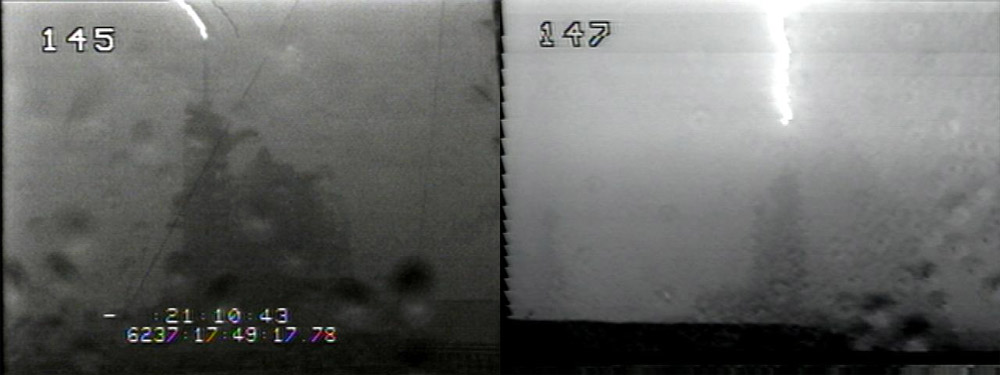NASA Scrubs Shuttle Launch Citing Lightning Strike, Weather

CAPECANAVERAL, Fla. - NASA engineers are battlingthunderstorms and rain as they struggle to understand the impact of a launchpad lightning strike that scrubbed the planned Sunday liftoff of the space shuttle Atlantis.
Shuttleofficials have found at least two anomalies - one on Atlantis' Pad 39B launchpad and another on the orbiter itself - associated with a powerful lightningstrike Friday that led them to postpone the Aug. 27 space shot. But acomprehensive survey of those areas must wait until heavy thunderstorms and alightning threat pass over NASA's Kennedy Space Center (KSC) launch site.
"We thinkit may be the largest lightning strike in terms of the current," Cain said in apress briefing here after the scrub, adding that the bolt's strength measuredaround 100,000 amps. "We know just enough to know that we don't know enough tobe able to press on into a launch countdown tomorrow."
Atlantiswas set to launch six astronauts toward the International SpaceStation (ISS) at 4:29:57 p.m. EDT (2029:57 GMT)Sunday on NASA's STS-115mission to resume construction of the orbital laboratory. The shuttle's60-foot cargo bay is filled with a 17.5-ton pair of portsidetrusses and solar arrays to be installed aboard the ISS.
Severestorms have been a daily phenomenon here at NASA's launch site, highlightedby the 1:49 p.m. EDT (1749 GMT) lightning strike atAtlantis' Pad 39B.
"It wascertainly not a hit to the vehicle, I want to make that perfectly clear," saidNASA launch director Michael Leinbach of the strike. "But you can get aninduced voltage field around the lightning strike, and that's what we'relooking at now."
Thelightning struck one of a network of cables designed to protect shuttle launchpad structures and orbiters from being hit. The one-inch steel runs over thetop of an 80-foot fiberglass mast and stretches about 1,000 feet on either sideto the ground.
Breaking space news, the latest updates on rocket launches, skywatching events and more!
Afterreviewing data from the lighting strike, engineers detected a small spike inthe voltage readings from one of the three electrical buses that supply powerto certain systems aboard Atlantis, Cain said. The spike - in a unit known asEssential Bus 1 BC - spanned just 80 milliseconds, but was enough to beginchecks to ensure none of the shuttle's systems were compromised during thelightning strike.
A secondarea of interest is a vent arm that siphons off gaseous liquid hydrogen, whichis used with liquid oxygen to fuel shuttle launches, from Atlantis' 15-storyexternal tank. The vent arm attaches to a region near the mid-body of Atlantis'external tank and separates from the vessel via an explosive pyrotechnic deviceless than one minute before launch during a typical shuttle liftoff, NASAofficials said.
"We are99.9 percent sure the pyro did not fire," Leinbach said. "We don't suspect itfired, but again that's why we have to go out and look at it."
Checkingthe vent arm, its associated cables and electronics will take several hours, headded.
Leinbachsaid it typically takes about 96 hours to check all of the necessary systems ata launch pad, any orbiter that's present, and associated external tanks andboosters after a lightning strike. Engineers don't plan to check all of thosesystems, only those required to make sure Atlantis is safe to fly Monday.
"We need tolet the folks go off and look at their data," Cain said. "And that's what we'regoing to do."
NASA'swindow to launch Atlantis runsthrough Sept. 7. The shuttle's chances of actually rocketing spacewardSunday were a bitlow due to a 60 percent chance of rain, thunderstorms and clouds near itslaunch site.
Lt. Kaleb Nordgren,of the 45th Weather Squadron at Cape Canaveral Air Force Station,said Monday's forecast calls for only a 20 percent chance of bad weatherpreventing a launch. Tuesday's launch forecast is also favorable, thoughweather conditions will again begin to deteriorate on Wednesday, he added.
Lightningtypically strikes NASA's two shuttle launch pads about five times each year,though no reports of serious damage have been recorded to date, according toNASA records. In 1983, bolts of lightning struck the launch pad while anorbiter was present three times, records show.
Lightningalso struckthe launch pad perimeter - not the pad itself - six days before NASA's July 4thlaunch of the space shuttle Discovery's STS-121mission last month.
"Florida is the lightning capitol of the U.S.," Nordgren said.
- VIDEO: First Tasks of NASA's STS-115 Mission
- Gallery: Prepping Atlantis
- Complete Space Shuttle Mission Coverage
- NASA's STS-115: Shuttle Atlantis to Jump Start ISS Construction
- The Great Space Quiz: Space Shuttle Countdown

Tariq is the award-winning Editor-in-Chief of Space.com and joined the team in 2001. He covers human spaceflight, as well as skywatching and entertainment. He became Space.com's Editor-in-Chief in 2019. Before joining Space.com, Tariq was a staff reporter for The Los Angeles Times covering education and city beats in La Habra, Fullerton and Huntington Beach. He's a recipient of the 2022 Harry Kolcum Award for excellence in space reporting and the 2025 Space Pioneer Award from the National Space Society. He is an Eagle Scout and Space Camp alum with journalism degrees from the USC and NYU. You can find Tariq at Space.com and as the co-host to the This Week In Space podcast on the TWiT network. To see his latest project, you can follow Tariq on Twitter @tariqjmalik.
